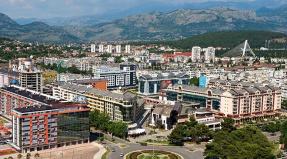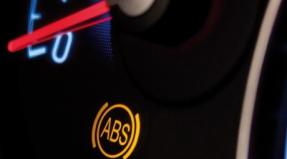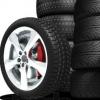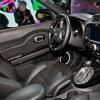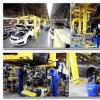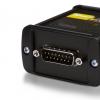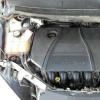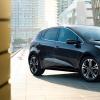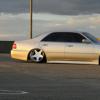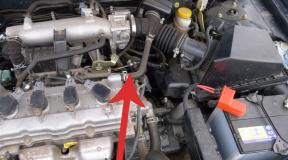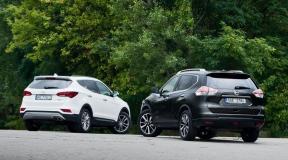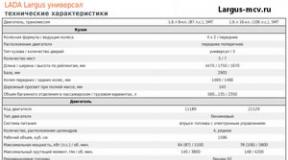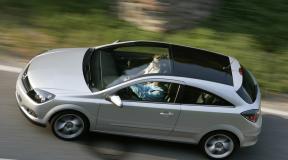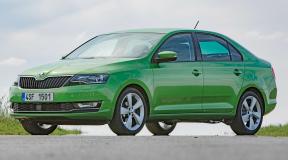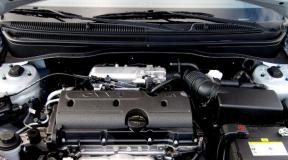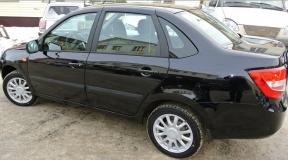Specifications Nissan Qashqai. Nissan Qashqai Fuel Tank Models and Claimed Fuel Efficiency
At Japanese brand Nissan has always had a lot of fans, but the brand's models made their way to the conservative European market with difficulty. Seeing the success of Toyota Rav4, Nissan decided to make the model no less successful. And they succeeded, at least in the Russian market.
Nissan Qashqai it is the bestseller of the domestic market. It went on sale in 2006 and was accepted with a bang. The Japanese managed to make a typical European car, by the way, they developed it in Europe (in England). When creating the model, a technology similar to the development of Ford was used - computer-aided design, which allows for fewer real tests of certain elements. The name of the car was in the wake of the Tuareg, in honor of the nomadic tribes of Asia. According to the engineers, Nissan Qashqai was created for the city, but a large margin of safety was laid in it, so that it would not give up on impassable roads. For a strong body and a sufficient set of active and passive safety equipment, Qashqai received 5 stars in European crash tests.
First generation car from 2006 to 2010
As befits a city car, the first generation of the crossover is not large, and here the Nissan Qashqai has the following technical characteristics:
- length 4310 mm
- width 1780 mm
- height 1610 mm
- ground clearance 180 mm
- wheelbase 2630 mm
- volume luggage compartment from 352 to 1513 l
- tank volume 65 l
- unladen weight 1410 kg
- gross weight 1930 kg.
According to the calculations of Japanese engineers, these proportions are ideal for an urban crossover. And most of the competitors initially took the dimensions of Qashqai as reference. But in order to cover those buyers who want a car slightly bigger size an elongated modification was made, called Qashqai + 2, it had the following dimensions:
- length 4525 mm
- width 1783 mm
- height 1645 mm
- ground clearance 200 mm
- wheelbase 2765 mm
- luggage compartment volume from 352 to 1520 l
- tank volume 65 l
- unladen weight 1317 kg
- gross weight 1830 kg.
Four power units were installed on the first generation:
- 1.5 liter diesel engine with 105 hp developed an impressive 240 Nm of thrust and was very economical: consumption in the city was 6.2 liters, and on the highway 5 liters. But the dynamics was very mediocre - 12.2 seconds to 100 km / h. Gearbox - 6-speed manual. It was not installed on Qashqai + 2.
- a 1.6-liter gasoline unit with a capacity of 115 hp, with a torque of 156 Nm. Such an engine worked only with a 5-speed manual. Like the base diesel, this initial gasoline engine runs without a spark, and accelerates reluctantly - in 12 seconds to 100 km / h, while consuming 8.4 liters.
- 2.0 diesel with 150 hp and 320 Nm of torque. Before the base one and a half liter diesel engine, it did not stand out with special dynamics - 12 s to 100 km / h, but was more “gluttonous”, on average by 15%. But it was this unit that was equipped with all-wheel drive and a classic 6-speed automatic, so there was always a demand for it.
- 2.0 top gasoline engine, which accounted for 70% of sales. Power 141 hp, torque 198 Nm, consumption up to 100 km / h in 10.1 s. Fuel consumption is only 10.7 liters in the city and 6.6 liters on the highway. A car with such an engine could be bought both with mechanics and with a variator.
- Only gasoline units with a capacity of 1.6 and 2.0 liters were supplied to Russia. The most popular was the 2-liter version, which was unpretentious in terms of fuel quality.

Second generation car since 2010
In 2010, the facelift of the model took place. Representatives of Nissan traditionally listen to the opinion Russian buyers Therefore, a delegation from Japan was the first to visit our country and get acquainted with the opinion of our compatriots.
Technical characteristics of Nissan Qashqai after the update:
- length 4330 mm
- width 1780 mm
- height 1615 mm
- ground clearance 200 mm
- wheelbase 2630 mm
- luggage compartment volume from 400 to 1513 l
- tank volume 65 l
- unladen weight 1298 kg
- gross weight 1830 kg.
The platform of the model has remained the same, and the wheelbase has not changed. But Qashqai grew in length by 30 mm, became 20 mm higher from the ground and at the same time became lighter by a whole centner. External changes have affected mainly the front part, where a new, more aggressive head lighting technology is now installed, the shape of the hood, fenders and radiator grille has been redesigned. Since there were no complaints about Qashqai's handling, the developers improved the sound insulation and slightly changed the suspension settings.

Qashqai + 2 has also changed and has the following dimensions:
- length 4541 mm
- width 1780 mm
- height 1645 mm
- ground clearance 200 mm
- wheelbase 2765 mm
- luggage compartment volume from 130 to 1513 l
- tank volume 65 l
- unladen weight 1404 kg
- gross weight 2078 kg.
Let's compare the technical characteristics of the elongated Nissan Qashqai: the clearance increased by 2 cm, which, according to the owners, made it much easier to get off the ground, as well as to move along a snowy road. Thanks to the modified shape of the bumper, Qashqai no longer scoops up snow, but sends it under the bottom of the car. Another of the innovations of the Qashqai + 2 version is the ability to install a third row of seats.
The second generation has completely lost diesel units, now only two are available to customers to choose from gasoline units:
- 1.6 l with a capacity of 114 and 117 hp torque of 156 and 158 Nm. Both engines differed in a gearbox, the younger version was aggregated only by mechanics, and the older one by a variator. Dynamics on the mechanics - 11.8 s to 100 km / h, on the variator - 13 s.
- 2.0 with 141 hp - migrated unchanged from the first generation. On it, as before, mechanics (6 steps) and a variator were installed.

Four-wheel drive
System all-wheel drive Nissan crossovers have the same regardless of model. It has a classic formula - a front-wheel drive car with an electronically connected rear-wheel drive. But unlike most competitors, the Qashqai driver can control the drive using the Lock key, which closes the all-wheel drive clutch and the car becomes forcibly all-wheel drive.
If you give everything at the mercy of electronics, then 0.1 seconds from the moment the slip starts is enough to connect the rear wheels. The mass of the Qashqai all-wheel drive is 70 kg. On the leading 4 wheels, Qashqai can only move up to 40 km / h, after which the all-wheel drive is turned off.
Complete sets and prices of 2013
Qashqai on the domestic market is sold in 5 trim levels:
- XE- from 789,000 to 991,000 rubles. Includes standard equipment: ABS, Nissan BrakeAssist and EBD, ESP, front and side airbags, curtain airbags, auto-locking doors, central locking, headlight washer, eur, immobilizer, dokatka, full double-glazed windows with electric drive, heated seats, fabric interior, air conditioning, radio with 4 speakers and Bluetooth, 16th steel wheels.
- SE - from 849 900 1 051 000 rubles. Includes additional options: leather steering wheel and gearshift, seatback pockets, USB and iPod connectors, 16th alloy wheels, fog lights, rain sensor.
- SE+ - from 873,000 to 1,075,000 rubles. It differs from the Se version by the presence of a rear-view camera, a 5-inch color display of the audio system and a different styling package.
- 360 - from 937,000 to 1,139,000 rubles, this equipment is supplemented with the following options: 18th alloy wheels, a panoramic roof, tinted windows, leather-trimmed armrests and a proprietary 360-degree viewing system with 4 cameras.
- Le+ - from 1,029,000 to 1,176,000 rubles. Extras include: keyless entry and push button start, leather seats, BOSE audio system and xenon headlights.
- All configurations to choose from are combined with any engine, gearbox and transmission. Version +2 has similar equipment, but optionally has a third row of seats.

Conclusion
Nissan Qashqai made a name for itself when the main competitors were in the prototype stage. For the Russian market, it is a bestseller and is sold in the amount of 35 thousand units a year, all this thanks to balanced technical characteristics, efficient all-wheel drive and a reasonable price. It is also worth noting that the Qashqai + 2 version with its 7-seater salon is cheaper than any other analogue, by about 100 thousand rubles.
The next update is just around the corner. It is expected that the new model will have a different platform and get engines with a turbine.
Few people know what the difference is in such trifles as the volume of the Nissan Qashqai tank in the 2008, 2012, 2016 models. Structurally, the cars are quite similar, but they have a number of features that you need to know. For example, the larger the gas tank, the more convenient it is to use it, since you will have to refuel less often.
What is the difference?
Having studied the material on the Internet, you can see that the capacity of the gas tank of gasoline Nissan Qashqai may differ from each other. The data differ by five liters: do not rush to accuse motorists of inaccurate measurements.
The fact is that the volume of the tank varies depending on the Nissan model and the year of its release: for example, regardless of the engine size and equipment of the car, a fuel tank with a capacity of 65 liters is installed in all models of 2012–2013.
This is quite convenient, depending on the engine size, fuel consumption will vary from 5.3 to 8.9 liters, in addition, it is influenced by driving style, terrain, cycle. The data are given for the mixed cycle. With a full gas tank, you can drive at least 400 kilometers without worrying about refueling the car.
Volume fuel tank The Nissan Qashqai J10, released in 2010, is 65 liters, and the second-generation car of 2013, the J11, lost a little in volume due to the design, and its tank is now 60 liters. It is worth paying attention to the fact that the 2014 models are equipped with a 55-liter tank. How convenient this is is debatable, since most owners use the car for an urban environment and not the longest trips on the highway. One gas station is enough to get from point A to point B or to operate the car around the city for several days.
Is there a difference with diesel?
If you are interested in the question of how many liters the tank of diesel Nissans holds and whether it differs in volume from gasoline models, the answer to it is extremely simple: there are no differences in this parameter between cars.
The tanks are interchangeable, have the same shape and capacity, but you should not use a used tank from a diesel one for a gasoline car or vice versa. Residues of fuel that is not suitable for your engine can remain in it and harm the power unit during operation.

The main condition for replacing a part is the year of manufacture of the car and its model. It is most convenient to choose a spare part by VIN code: this is a 100% guarantee that the part will be selected correctly and will not have to be exchanged.
Conclusion
Of course, the larger the gas tank, the more convenient it is to use, since you have to refuel the car less often. However, it is worth remembering that modern Nissan Qashqai consume less fuel, so they do not have to be refueled so often, and the reduced volume of the gas tank does not affect the comfort of operation.
Nissan Qashqai after its appearance instantly set the fashion for a new type of car - crossovers. Without much waiting, the manufacturer even releases a 7-seat model (Nissan+2). This was followed by restyling, which went to the popular model only as a plus. The only fear of domestic drivers was the question "How much will the car travel on one tank?"
After the release of the first Qashqai, Nissan updated not only the exterior, interior, but also the engine. Some of them were quite economical, and 2-3 barely combustible with a considerable appetite, regardless of the driving mode. Below is a water table of all engines and factory fuel consumption.

As you can see, the spread in engine volumes is only 3 varieties, except for a 1.5-liter diesel. But even the consumption declared by the manufacturer is not the most pleasant. At the same time, diesel ICEs are slightly more economical. According to the reviews of the owners, the fuel consumption of the Nissan Qashqai is slightly higher, but this may depend on the specifics of the climate, road features, and the overall load on the car.
The second generation Nissan Qashqai and their performance
Since the restyled and first generation versions will already be used, it makes no sense to indicate this Nissan Qashqai consumption option. It is much more realistic to find models that appeared after 2013. The first five-seater crossover of this year received two diesel and petrol units. Gasoline consumption in these Nissan Qashqai was 4.5-5.1 liters. Diesel installations according to the passport promised 3.9 liters.
Suddenly there was a 1.2 liter engine. It was equipped with a manual transmission or a variator. With a maximum of 115 hp. consumption is declared at 5.9 liters. The top two-liter engine with the same gearboxes has 144 hp. it already consumes 7.1 liters of fuel.
Types of tanks in Qashqai models
Despite the general similarity of cars of all years of manufacture, fuel capacities differ significantly. So, for example, with any ICE of the 2012-2013 model, the capacity was 65 liters. With mixed movement, a full load is enough for 400 kilometers. The updated version with the J11 body had a Nissan Qashqai tank capacity of 60 liters, 5 liters less. This was due to body changes. In 2014, the volume of the Nissan Qashqai fuel tank became even smaller, 55 liters. It is believed that this volume is enough for city trips or small tours outside the city. Diesel and gasoline tanks are completely identical in design.
Useful video
When replacing the container, it is strongly recommended to choose the exact container for a specific model of the desired year. Some may fit into a cavity in the machine itself, but the attachments, connection points to fuel system may not match. The ideal option is to select a tank by VIN code.
If you're looking for the perfect combination of high fuel efficiency and a dynamic, premium crossover, now you're looking at the best possible option. With its aerodynamic styling and X-Tronic CVT continuously variable transmission, the new Nissan Qashqai is the perfect vehicle for you.

GO! CHOOSE YOUR GEARBOX
Effortlessly save fuel with Nissan's electronically controlled continuously variable transmission (with ECO mode) or drive with the 6-speed manual transmission.

MANUAL TRANSMISSION
The 6-speed manual transmission delivers power when you need it, coupled with crisp, precise shift feel and instant response.

CVT
The continuously variable transmission provides a smooth increase in power and is equipped with an ECO mode.
NEW NISSAN QASHQAI: ECO MODE
Select the ECO mode* to achieve the best fuel efficiency easily and effortlessly.
*Only available in vehicles with automatic transmission

ADAPT TO ANY CONDITION INTELLIGENT ALL-WHEEL DRIVE SYSTEM
Thanks to Nissan Intelligent Mobility, the new Nissan Qashqai can adapt to changing road conditions instantly. On wet or snowy roads, the advanced all-wheel drive system will automatically distribute power between the wheels.


INTELLIGENT AWD
The intelligent all-wheel drive system analyzes the grip of each wheel and instantly distributes the torque, transferring up to 50% of the force to the rear axle.
DRIVE LIKE A PRO BE CONFIDENT IN YOURSELF, COMMAND THE WAY
Agile, responsive, pliable and always safe, the new Nissan Qashqai inspires you to get behind the wheel again and again thanks to its finely tuned suspension and a wealth of intelligent driving assistance systems.


INTELLIGENT ENGINE BRAKING (AEB)
This technology engages engine braking, thereby reducing the load on the braking system when cornering and stopping. The reduction in rpm and effort required makes driving easier and more comfortable.

BODY ROLLING ROLLER (ARC)
By slowing down the engine or applying the brakes, the system gently adjusts the vehicle's motion to avoid unnecessary body roll on rough roads.

NISSAN INTELLIGENT MOBILITY - A NEW DRIVING STYLE
Nissan Intelligent Technology includes a range of assistance systems to give you even more confidence on the road.
CLEAR AND PRECISE CONTROL
Enjoy unsurpassed maneuverability in challenging urban environments. The new Nissan Qashqai combines stability and safety. Just enjoy every minute spent driving the new Nissan crossover, which is ready to help in any difficult situation.

The crossover (J11 body) is offered on the Russian market with three power plants: a 1.2 DIG-T turbocharged gasoline engine (115 hp, 190 Nm), a 2.0 atmospheric gasoline engine (144 hp, 200 Nm) and a 1.6 turbodiesel dCi (130 hp, 320 Nm). Two of the three specified units are also installed under the hood of a partner in model range– . Petrol "turboservice" 1.2 DIG-T was previously installed mainly on cars Renault, and Qashqai became almost the first of the crossovers to have this small, but very nimble engine at its disposal. It is aggregated with a 6-speed mechanical box or Xtronic CVT. The same two types of transmissions are available for the 2.0-liter engine. The diesel version of the Nissan Qashqai is equipped with a CVT only.
The use of a modular CMF platform with a high content of high-strength steels as a base made it possible to obtain a lightweight body resting on the front independent suspension with MacPherson struts and rear multi-link design. Both front-wheel drive and all-wheel drive configurations are provided. The plug-in all-wheel drive system with an interaxle electromagnetic clutch installed in front of the rear axle gearbox is equipped only with the Nissan Qashqai 2.0 modification.
The average fuel consumption of a SUV with a 1.2 DIG-T turbo engine, according to passport data, does not exceed 6.2 l / 100 km. A crossover with a 2.0-liter engine consumes a little more - about 6.9-7.7 liters, depending on the modification. The diesel Nissan Qashqai is distinguished by high fuel efficiency, consuming about 4.9 liters of diesel fuel in the combined cycle.
Specifications Nissan Qashqai J11 - summary table:
| Parameter | Qashqai 1.2 DIG-T 115 HP | Qashqai 2.0 144 HP | Qashqai 1.6 dCi 130 HP | ||
|---|---|---|---|---|---|
| Engine | |||||
| engine's type | petrol | diesel | |||
| Supercharging | there is | No | there is | ||
| Number of cylinders | 4 | ||||
| Number of valves per cylinder | 4 | ||||
| Volume, cu. cm. | 1197 | 1997 | 1598 | ||
| Power, hp (at rpm) | 115 (4500) | 144 (6000) | 130 (4000) | ||
| 190 (2000) | 200 (4400) | 320 (1750) | |||
| Transmission | |||||
| Drive unit | 2WD | 2WD | 2WD | 4WD | 2WD |
| Transmission | 6MKPP | 6MKPP | Xtronic CVT variator | Xtronic CVT variator | Xtronic CVT variator |
| Suspension | |||||
| Front suspension type | MacPherson type independent | ||||
| Rear suspension type | independent multi-link | ||||
| Brake system | |||||
| Front brakes | disc ventilated | ||||
| Rear brakes | disk | ||||
| Steering | |||||
| Amplifier type | electric | ||||
| Tires | |||||
| Tire size | 215/65R16, 215/60R17, 215/45R19 | ||||
| Disk size | 16×6.5J, 17×7.0J, 19×7.0J | ||||
| Fuel | |||||
| Fuel type | AI-95 | DT | |||
| Tank volume, l | 60 | ||||
| Fuel consumption | |||||
| City cycle, l/100 km | 7.8 | 10.7 | 9.2 | 9.6 | 5.6 |
| Country cycle, l/100 km | 5.3 | 6.0 | 5.5 | 6.0 | 4.5 |
| Combined cycle, l/100 km | 6.2 | 7.7 | 6.9 | 7.3 | 4.9 |
| dimensions | |||||
| Number of seats | 5 | ||||
| Length, mm | 4377 | ||||
| Width, mm | 1806 | ||||
| Height, mm | 1595 | ||||
| Wheel base, mm | 2646 | ||||
| Front wheel track, mm | 1565 | ||||
| Rear wheel track, mm | 1550 | ||||
| Trunk volume, l | 430 | ||||
| Ground clearance (clearance), mm | 200 | 200 | 185 | ||
| Weight | |||||
| Equipped, kg | 1373 | 1383 | 1404 | 1475 | 1528 |
| Full, kg | 1855 | 1865 | 1890 | 1950 | 2000 |
| Maximum trailer weight (equipped with brakes), kg | 1000 | ||||
| Maximum trailer weight (not equipped with brakes), kg | 709 | 713 | 723 | 750 | 750 |
| Dynamic characteristics | |||||
| Maximum speed, km/h | 185 | 194 | 184 | 182 | 183 |
| Acceleration time to 100 km/h, s | 10.9 | 9.9 | 10.1 | 10.5 | 11.1 |
Dimensions Nissan Qashqai
Crossover in the back of J11 slightly increased in size relative to its predecessor. The length of the car is 4377 mm, width - 1806 mm (excluding mirrors). Only the height of the crossover has decreased, now it is 1595 mm.
Nissan Qashqai J11 engines
HRA2DDT 1.2 DIG-T 115 HP
The four-cylinder gasoline turbo engine 1.2 DIG-T, developed by Renault, replaced the 1.6-liter naturally aspirated engine. power unit with the H5FT index, it is equipped with an aluminum cylinder block, direct fuel injection, a timing chain drive, and a variable valve timing system at the intake. Turbocharging allows you to squeeze out 115 hp from a small engine, which are available from 4500 rpm. At the same time, the maximum torque of 190 Nm is already reached at 2000 rpm, which helps to start confidently from a standstill.

MR20DD 2.0 144 HP
The MR20DD engine, representing an improved MR20DE unit, received a variable length intake manifold, a system direct injection, phase shifters on intake and exhaust valves.

R9M 1.6 dCi 130 hp
The 1.6 dCi turbocharged diesel engine is built on the basis of its predecessor - 1.9 dCi (index F9Q). Up to 75% of the parts used in the new engine were developed from scratch. The design of the unit provides for the presence of direct injection with portioned fuel supply, a variable geometry turbocharger, an exhaust gas recirculation system, a variable displacement oil pump, and a Start / Stop system. The peak torque of the 1.6 dCi 130 motor is 320 Nm (from 1750 rpm). The emission level of 129 g/km allows it to comply with the Euro 5 environmental standard.

Technical characteristics of Nissan Qashqai engines:
| Parameter | 1.2 DIG-T 115 HP | 2.0 144 HP | 1.6 dCi 130 hp |
|---|---|---|---|
| Engine code | HRA2DDT (H5FT) | MR20DD | R9M |
| engine's type | turbocharged petrol | gasoline without turbocharging | diesel turbocharged |
| Supply system | direct injection, dual camshafts (DOHC), variable valve timing on intake valves | direct injection, two camshafts (DOHC), double variable valve timing | common rail direct injection, dual camshafts (DOHC) |
| Number of cylinders | 4 | ||
| Cylinder arrangement | row | ||
| Number of valves | 16 | ||
| Cylinder diameter, mm | 72.2 | 84.0 | 80.0 |
| Piston stroke, mm | 73.1 | 90.1 | 79.5 |
| Compression ratio | 10.1:1 | 11.2:1 | 15.4:1 |
| Working volume, cu. cm. | 1197 | 1997 | 1598 |
| Power, hp (at rpm) | 115 (4500) | 144 (6000) | 130 (4000) |
| Torque, N*m (at rpm) | 190 (2000) | 200 (4400) | 320 (1750) |

